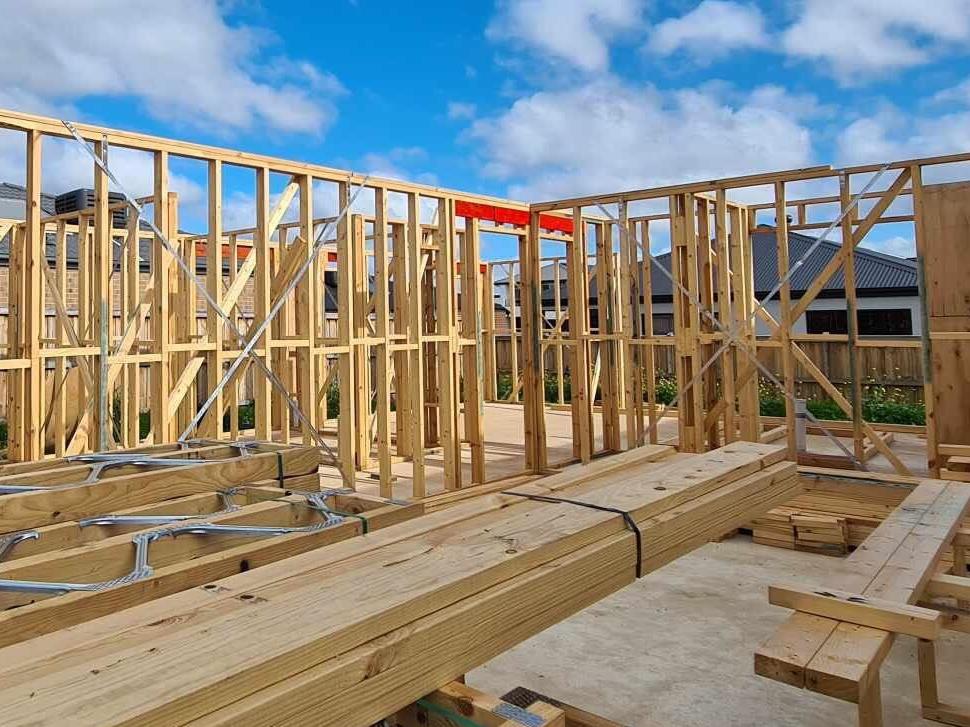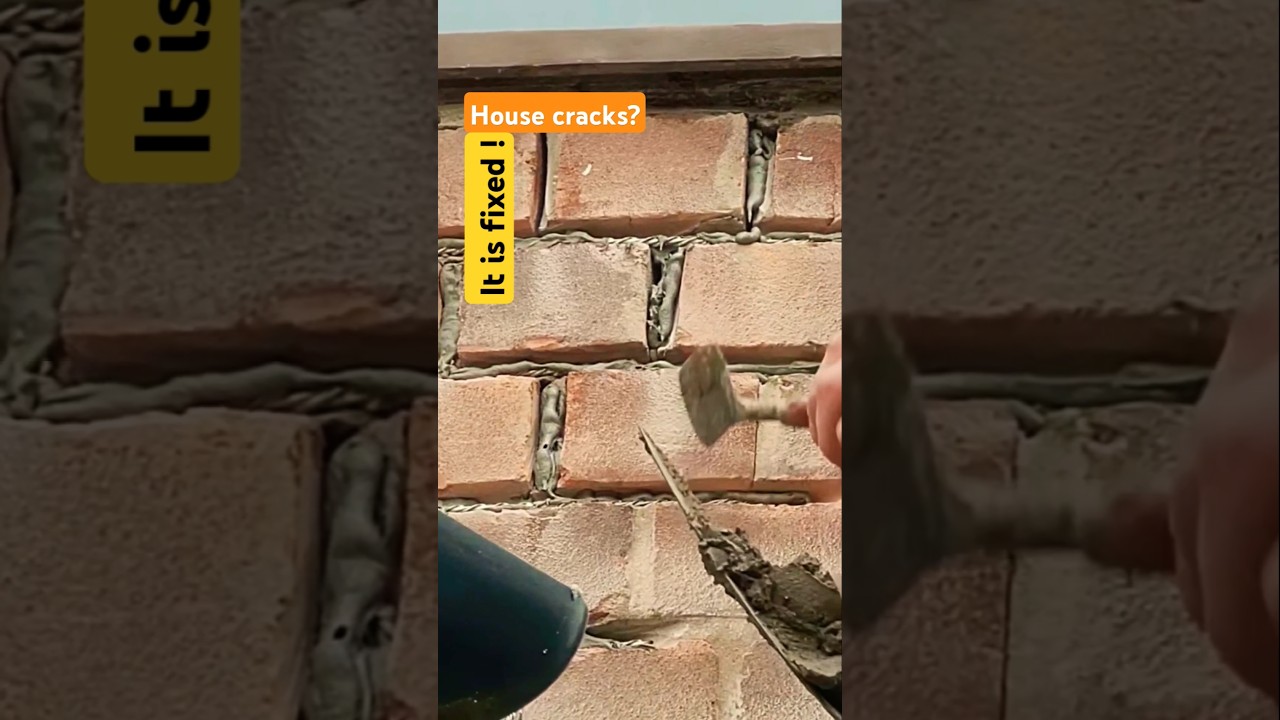
A partially built home where construction stalled after the 2024 collapse of Grandeur Homes.
The collapse of more than 3000 construction firms has legal and building industry figures worried about government plans to fix Australia’s housing crisis with a new home boom.
Australian Securities and Investments Commission figures released on December 23 show 3217 Aussie construction firms went into administration in 2024, many leaving families waiting on their dream home facing delays, added costs and uncertainty.
The numbers have surged from 2546 in the prior 12 months, the same year volume builder Porter Davis became insolvent with more than 1700 homes underway.
RELATED: Propertyology: Aussie cities with home prices tipped to go nuts in 2025
Australian home crisis: Nation’s biggest builder says affordability fight ‘going backwards’
Bensons Property Group’s voluntary administration leaves uncertain future for Chevron One
There were just 1793 construction firm failures in 2022.
Australian Builders Collective president Phil Dwyer said with construction business insolvencies rising those hoping to build a home in 2025 would need to be extra vigilant as the government’s plans to build 1.2 million new homes by 2029 put more pressure on the sector.
Mr Dwyer noted that when even a small a builder went into administration, they often took a handful of subcontractors with them — but bad operators often found a way to escape consequences.
While some of the nation’s biggest builders such as Metricon and Simmonds last year reported bumper revenues, the insolvency data is believed to be being led by smaller operators who have tried to continue operating even while in worsening debt.
Prime Minister Anthony Albanese has implemented policies to build 1.2 million new homes around Australia by 2029 in a bid to improve housing affordability. Picture: Brendan Radke.
However even big players are calling time, with east cost apartment developer Bensons Property Group entering voluntary administration with more than $1.5bn in projects underway — though its chief executive Rick Curtis has noted they are working to ensure sold homes are built.
Mr Dwyer along with Kalus Kenny Intelex Lawyers’ principal Peter Lettieri have both warned families will need to watch out for red flags before signing up with a builder in 2025.
What to do before you sign up with a builder
Mr Dwyer said buyers needed to research their builder before signing up, and even if you were happy with your discussions with them to ask to speak with past clients.
“You want to chat with the last couple of people they have built for,” he said.
“If they aren’t willing to give you the last customer they have built for, there’s probably something wrong.”
When speaking with past customers, you should be asking about whether the project was on time, if they were happy with all aspects of the home and how the builder conducted themselves.
“If it was a bad experience, consumers will be very willing to tell you — and if it’s a good experience, they will also be all over it,” Mr Dwyer said.
Mr Lettieri said a thorough social media stalk could also be valuable in helping to spot issues about a builder’s reputation, but should not replace things such as understanding how long they have been operating for and how well they communicate with you before you sign up.
How well your builder communicates before you sign up can give an indication of how responsive they will be once they start work.
However, he said prospective buyers should be aware of alarm bells including pressure tactics to get you to sign a contract — especially if they try to deter you from seeking legal advice on a contract.
Other things to watch out for are proposals for excessive milestone payments that don’t reflect the cost expenditure of the works being done, refusal to negotiate terms to genuinely cover the buyers costs on matters such as liquidated damages (what a builder pays for delays beyond the date cited for practical completion), or a refusal to provide security for the project.
Security is typically in the form of cash held back by the owner in case of defective or unfinished work, but paid out once the works are finished.
Mr Dwyer noted that having a chat with subcontractors your builder used before signing up could also be a way to build confidence in them, but should be done by asking upfront to connect with them as going behind the builder’s back could get their nose out of joint.
Asking subcontractors about how they find working with your planned builder can give important insights into how your home build will progress.
Tradies should be asked how long they’ve worked with the builder for, and how they find projects go with them.
It is also worth asking specific questions about things like waterproofing — which can be expensive to remedy if not done properly.
“Most builders will respect you being thorough,” Mr Dwyer said.
“They will probably welcome these questions, as you do need to work together.”
What to watch out for after you get started
Once you have signed with a builder, getting to know the sub contractors working on the build could also be advisable.
Arriving around knock-off time on a Friday with some cakes or snacks could help build a relationship with them, and make it more likely they will alert you if they are seeing issues.
“If they aren’t getting paid on time, that can lead to issues,” Mr Dwyer said.
While delays could be a sign of an issue, Mr Dwyer said it was possible for material shortages to impact a build.
However, if the whole site is paused he said that might be cause for concern.
With hundreds of thousands of homes to be built each year around Australia for the next five years, government plans could strain supply chains and cause delays.
If you had a sense the builder was trying to get money out of you sooner than was necessary, Mr Dwyer said that should be cause for concern.
“Builders facing insolvency will try like hell to get the next payment,” he said.
Mr Dwyer said early warning signs included if you had materials being delivered, but the supplier refusing to take them off the truck until payment was received.
An explanation should be sought if there are numerous providers seeking “cash on delivery”.
However, he noted that things like your builder working on things a subcontractor might often be brought in for shouldn’t necessarily be cause for alarm — if the builder was skilled in that work.
Mr Lettieri said warning signs included demands for early or advanced payments, uncharacteristic and poor communication, delays without explanation, subcontractors asking you about missing payments.
If you begin to have concerns, Mr Lettieri said you should urgently seek legal advice.
Having a good understanding of when to make payments is also important, as recovering funds for works not yet completed by a builder that has become insolvent can be difficult.
What to expect if things go badly
A lawyer can advise you on if and how you can terminate the contract with your builder if the situation becomes particularly dire.
Legal representation can also advise you on any demands made for further payments by the liquidators of the builder, engaging a replacement builder and your entitlements to any cash still in the business.
Mr Lettieri noted that people planning to build a new home should be aware that home warranty insurance schemes varied heavily from state to state but that government efforts to beef them up to better secure homebuyers could lead to increased building costs.
Victorian laws are being changed to allow for rectification of dodgy work on new homes via the state’s Domestic Building Insurance scheme.
While it is not clear if other states will take similar approaches, Mr Lettieri said it was possible this could lead to increased use of the scheme — and higher insurance premiums for builders.
As building insurance schemes are beefed up, it is likely they will receive more use — potentially increasing the cost of building a new home.
“And it is not hard to see how this will then place increased financial pressure on builders, leading to increased build prices and builder insolvency risk,” Mr Lettieri said.
In Victoria, DBI is required before the builder receives the deposit, however Porter Davis breached this requirement for a number of homes before they collapsed in 2023.
Asking to see proof of the insurance can be advisable, and is a requirement in South Australia for projects to start work on any works where building indemnity insurance is required.
The trigger point on the cost of works varies from as little as $3300 in Queensland to a $16,000 minimum in Victoria.
However, there is also a cap to how much coverage the insurance provides, with the figure topping out at $300,000 in Victoria.
This can leave a significant gap, with latest Australian Bureau of Statistics data shows the average cost of a new house build approved in October last year was about $513,500.
Despite all the concerns, as Australia’s population rises it is likely established home value prices will too — making more people willing to build a new residence.
By putting in the due diligence and remaining vigilant during the build, Mr Dwyer and Mr Lettieri said it was possible to keep ahead of any issues.
“If you can deal with the builder in a transparent way, and get references from previous customers, you should be on fairly safe ground,” Mr Dwyer said.
Sign up to the Herald Sun Weekly Real Estate Update. Click here to get the latest Victorian property market news delivered direct to your inbox.
MORE: How Melb family got a home for $200k less than advertised
Aussie suburbs where car collectors find space to live large revealed | PropTrack
Inside Australia’s biggest radio stars’ high-end property moves






